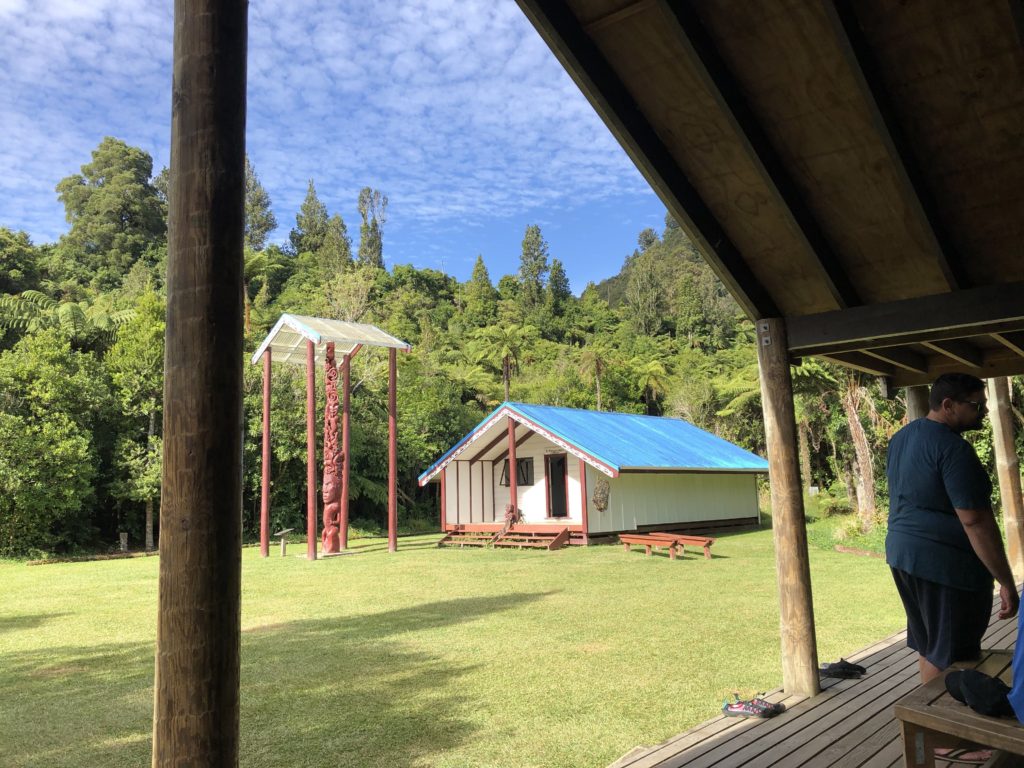It snowed almost a foot in Bethesda the day before we were scheduled to fly to New Zealand on January 14. The plow didn’t make it to our neighborhood, but fortunately our son Dylan was able to drive us to the airport in his pickup truck. After four connecting flights and losing a day across the international date line, we arrived in Auckland late in the afternoon on January 16. Sunny and warm, with just a hint of a chill in the evening. Delightful!
We spent a few days in Auckland to acclimate. The city is strikingly multicultural. There is a large Polynesian community and many Asians from various countries, which has had a salutary impact on culinary options. There’s lots to do here, but we contented ourselves with a visit to the Auckland Art Gallery, walks through city parks, and a couple of bike rides using the city’s extensive network of bike paths and inexpensive bike share program.
Two weeks since leaving Auckland have been a bit of a whirl, as that’s all the time we allotted to the rest of New Zealand’s North Island. Here’s a brief account and some reactions:
Waitomo. Glowworms (arachnocampo luminosa), a type of fungus gnat. We eschewed a cave adventure for a nighttime walk through “the bush.” Lots of phosphorescent dots on exposed moist surfaces where glowworms spend most of their life as larvae. It was pretty neat!
Whanganui Journey. This “Great Trek” in the Whanganui National Park is a 145km canoe trip down the Whanganui River. We rented a canoe in Taumaranui and paddled for five days over some 150 named rapids, some quite tricky. We were pleased to improve our canoeing skills and only flipped once! It was glorious to be on the river during the day and sleep again in our tent each night. The first two days run mostly through farmland (grazing animals), while the last three days run through some of the densest mixed forest “bush” on the North Island. On our first night we shared a campsite with David, a long distance cyclist (and I mean LONG DISTANCE—think solo three-month trips across Australia, Canada, or the United States). It turns out that David is a retired history professor, and he very graciously responded to our scattershot questions. Thanks David!
A note on the Whanganui River. In 2017, the government acceded to a longtime Maori demand and gave the Whanganui River a juridical identity “with all the corresponding rights, duties and liabilities of a legal person,” similar to a trust or other incorporated entity. The River is legally represented by two officials—one from the Maori and the other from the government. This is an interesting experiment intended to make it easier to enforce legal protections and hold to account those who damage the river.
Tongariro National Park. Established in 1887, Tongariro is the oldest national park in New Zealand, and the sixth in the world. [Note: Contrary to popular belief, Yellowstone, in the US, established in 1872, was not the world’s first national park. That honor goes to Bogd Khan Uul National Park in Mongolia, established almost 100 years earlier, in 1783.] Tongariro protects sacred Maori peaks and lakes and includes three active volcanoes. It is one of 28 UNESCO World Heritage Sites declared for both its cultural and natural value. We hiked the famous Tongariro Alpine Crossing up close to Ngauruhoe Volcano (“Mt. Doom” in the Lord of the Ring movies), and peered into two other minor volcano craters.
Te Urewera. This was our third national park (of four) on the North Island! Te Urewera contains one of New Zealand’s largest stretches of native mixed forest. We camped on the shores of Lake Waikaremoana and hiked to smaller and more isolated Lake Waikareiti, where we swam in its crystal-clear waters.
This is a good time to note how surprised we have been to see so little native forest. We subsequently learned in Te Papa, the excellent national history museum in Wellington, that while 85 percent of the two islands was covered in native forests when the first Maori arrived from the Polynesian islands in the late 1200s, that had been reduced to 55 percent by the time the main European migration began in 1840 and now stands at 25 percent.
Wellington. Unfortunately, we spent less than a day here as we prepared to cross to the South Island. I already mentioned the national museum, Te Papa, which we found truly remarkable for how it tells the story of New Zealand. There is equal attention to Maori and subsequent European settlement, and a frank recounting of harsh European treatment of the Maori and ongoing work to review claims and redress past harm via grants of land or monetary reparations. It’s refreshing to see such a clear narrative in a single national history museum. I think with sadness how we failed in our national history museum in the US to tell the stories of our native and enslaved peoples. Fortunately, that history is told today in the excellent National Museum of the American Indian and Museum of African American History and Culture. But how sad that we had to segregate those stories in separate buildings instead of recognizing them frankly as part of our shared national history. Bravo, New Zealand!












So liking your blogs. What fantastic travels you two are doing! I spent a day in Wellington on a NZ cruise that we did, and left with the impression that if we were to live in a New Zealand city that Wellington would be the place.
Edy and I went to Tongariro, but I was still sick from Cambodia so didn’t make the trek. Your weather looks perfect! And the ferry from Wellington to Picton was magical. Are you hiking the Queen Charlotte track?